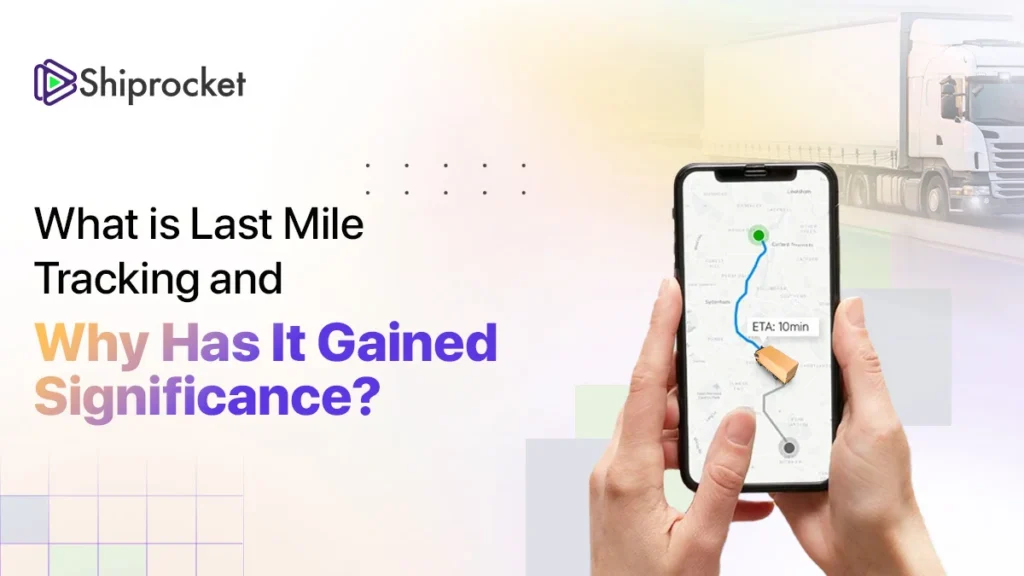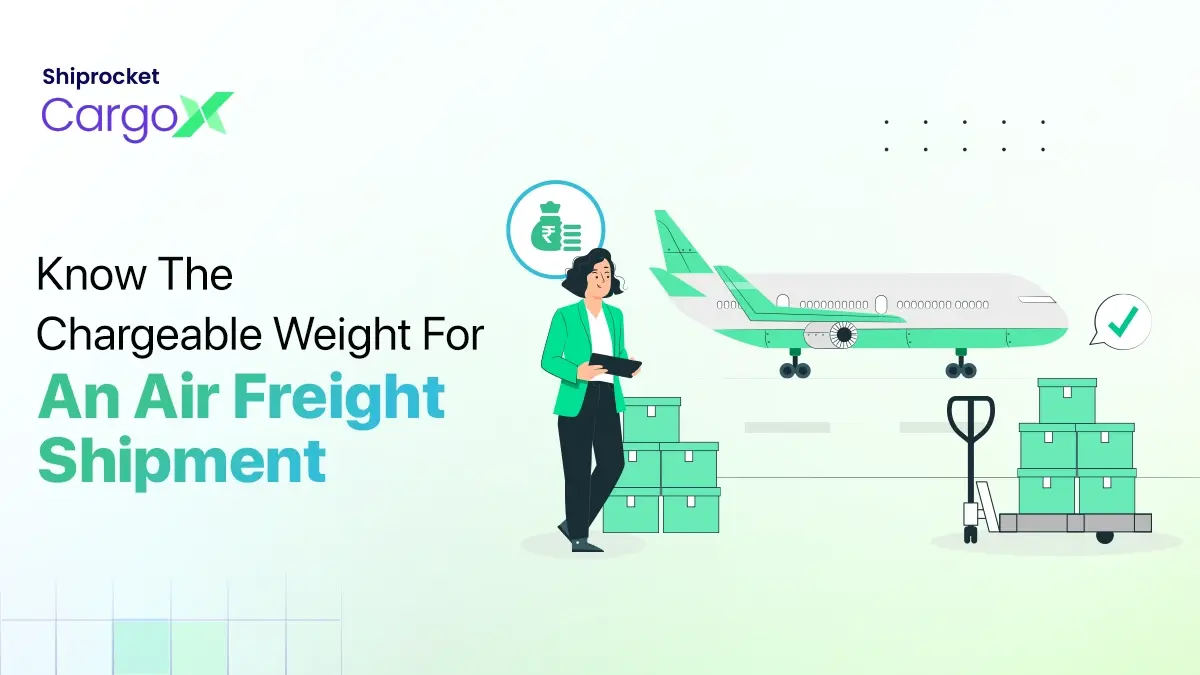Last mile tracking: Characteristics, Advantages, & Examples
- Last Mile Carrier Tracking: What is it?
- Characteristics of Last Mile Carrier Tracking
- What is Last Mile Tracking Number?
- Significance of Last Mile Tracking
- Steps to Track the Last Mile Carrier
- Hurdles for Last Mile Carrier Tracking
- Advanced Techniques for Last Mile Delivery Tracking
- Last Mile Carrier Tracking Software: About
- Advantages of Last Mile Tracking For eCommerce Businesses
- The Expense For Last Mile Delivery Tracking
- Examples of Businesses That Benefitted From Last Mile Delivery Tracking
- Logistics Companies That Provide Last Mile Delivery Service
- Latest Trends and The Future of Last Mile Delivery Tracking
- Conclusion
Last mile tracking provides information about the movement of goods as they are shipped to their destination using different transportation methods. As the customers get real-time updates about the whereabouts of their orders, they can anticipate their arrival in a better way. This increases customer satisfaction. As per a survey, 80% of online buyers seek smart tracking facilities for their orders. Providing this service has thus become essential in the current times. In this article, you will learn all about the last mile tracking service including its advantages, features, significance, hurdles, and a lot more. So, let’s get started!

Last Mile Carrier Tracking: What is it?
Last mile carrier tracking enables customers to get real-time updates about the location of their orders. Information about the expected time and date of delivery is also provided as a part of this service. As their packages move from the distribution center to the delivery destination, customers can check their movement constantly. Last mile tracking service is also meant to inform them about any delay in delivery so that they know when their package is likely to arrive.
Not just for customers, last mile tracking proves to be beneficial for businesses too. Any issues during the transportation can be taken care of if businesses know the real-time location of their shipments. Any disruptions arising on the way can be timely dealt with to ensure the goods reach their destination safely. This can avert the chances of incurring a loss.
Characteristics of Last Mile Carrier Tracking
Here is a look at some of the key characteristics of the last mile tracking facility:
- Notifications about Shipments
As a part of this service, customers are sent notifications about the real-time location of their orders. Through these notifications, information about the dispatch of an order from the distribution center, its pick-up by the delivery agent, and the estimated time of arrival of the delivery agent is communicated to the customers.
- Real Time Tracking
As already mentioned, real time tracking forms an essential part of the last mile tracking service.
- Proof of Delivery
It also involves the generation of proof of delivery. The delivery agents generate the same by taking an image, signature, or asking for a one-time password shared with the customers. This helps reduce the chance of fake deliveries.
- Contact Information of Delivery Agent
The contact details of the delivery agent including his name and contact number are shared through last mile tracking facility.
What is Last Mile Tracking Number?
Also referred to as the delivery confirmation number, the last mile tracking number is a unique code assigned to a shipment. It is meant to track the movement of goods from the transportation facility to the delivery destination. This number is usually given by the shipping carrier. It helps the customers know the real-time status of their package. Customers can check this information by entering the last mile tracking number on the online portal or mobile application.
Significance of Last Mile Tracking
Here is a look at the importance of this tracking service:
- Ensures Transparency
By sharing the exact location of shipments with the customers, businesses can ensure transparency. This, in turn, builds trust among the customers.
- Enhances Customer Satisfaction
By providing real-time updates about the whereabouts of their packages, businesses can enhance customer satisfaction. Customers appreciate accurate information about the delivery time.
- Increases Delivery Efficiency
It helps enhance delivery efficiency as any issue during transit can be timely dealt with to ensure a smooth delivery process.
Steps to Track the Last Mile Carrier
Here is a look at the steps involved in tracking the last mile carrier:
- The first step in the process is to visit the shipping carrier’s website.
- Next, enter the last mile tracking number in the option provided to track the package.
- After entering the tracking number, you shall be able to view the real-time location of your package and also its expected time of delivery.
You may contact the carrier directly if you have more queries related to your delivery.
Hurdles for Last Mile Carrier Tracking
Let’s have a look at some of the hurdles you might face in last mile carrier tracking.
- Last mile delivery tracking systems may face technical issues which can result in inaccurate estimations of the delivery time.
- Inadequate visibility of the delivery routes and condition of the traffic is one of the main hurdles in last mile carrier tracking. This sometimes makes it hard to calculate the precise delivery time and ensure timely deliveries.
- Last mile tracking may raise security issues if customer data and other important information are not safeguarded.
- Delivery agents and dispatchers might not be able to communicate smoothly at all times which can be another cause of hurdle in last mile delivery tracking. This can cause a delay in delivery.
- These high-tech tracking systems may appear to be costly, particularly for start-ups and small businesses. It can add to their overall business expenditure.
Advanced Techniques for Last Mile Delivery Tracking
Some of the latest technologies employed to enable last mile tracking are:
- GPS – GPS offers real-time tracking of the shipments. With the use of GPS tracking, companies can keep track of the real-time location of their fleet.
- RFID Tags and Barcodes – As the delivery vehicles move towards their destination, real-time status about their location can be provided by scanning these tags at different checkpoints.
- Barcodes – Barcodes enable easy package tracking. Throughout the delivery process, these codes can be scanned at different points to offer updates about the real-time location of the package.
- Mobile Application – They serve as a means to provide information about real-time traffic conditions and road diversions to the drivers. This helps them plan their routes better to ensure timely deliveries.
- Internet of Things (IoT) – This advanced technology helps track packages with the use of connected devices and sensors. IoT devices can offer information about the location of the package and other details that may determine the time of the delivery time.
- Electronic Logging Devices – They are used to track the service hours of commercial drivers. They are designed to keep a check on the drivers’ service.
Last Mile Carrier Tracking Software: About
A last mile carrier tracking software helps businesses monitor the delivery process of their order. Different tasks involved in the delivery process can be managed with the help of various features of this software. Top-rated tracking software provide an integrated dashboard that enables businesses to monitor the activities of multiple carriers from a single point. They also allow businesses to send timely updates to their customers. This helps maintain transparency and enhances customer satisfaction.
Factors to Consider While Choosing a Last Mile Carrier Tracking Software
Here is a quick look at the factors that must be considered while choosing a last mile tracking software for your business:
- Reviews and Ratings
It is important to check the reviews and ratings of the software to understand the kind of performance it is capable of delivering.
- Budget
Last mile tracking software matching different budgets are available in the market. There is a huge variation in their price depending on the brand, features and other factors. It is important to look for one that suffices your needs and comes well within your budget.
- Customer Service
It is suggested to select software from a company that offers good customer support service. This is necessary for the timely resolution of any issue that arises during the use.
- Proof of Delivery
Businesses should look for last mile tracking solutions equipped with the proof of delivery feature. This is important to ensure that the delivery agents do not register a fake delivery.
- Areas Covered
You must check whether the software covers your operating markets as well as the ones you are targeting in the future.
Advantages of Last Mile Tracking For eCommerce Businesses
Here is a quick look at the various advantages of installing last mile tracking software for your eCommerce business:
- It enhances customer experience by providing information about the real time location of their orders.
- Shipment companies can plan their delivery routes and schedules in a better way when they have access to the necessary information provided by last mile tracking software. This can help bring down the time and cost involved in the process.
- When companies have updated information about their vehicles and drivers, they can utilise their resources in a better way to optimise operational efficiency.
- It lowers the number of missed deliveries and instils trust in the delivery service.
- Last mile tracking enhances supply chain management by providing greater visibility over the shipments as they move from warehouses to the customers.
The Expense For Last Mile Delivery Tracking
Advanced technology needs to be used to provide last mile delivery tracking facility to the customers. Software systems that are more advanced provide precise information about the shipment’s location and status. A substantial cost is involved in installing the tracking software, however, it must not be seen as an expense. It should rather be seen as an investment. Businesses that do not invest in this software are likely to witness loss owing to inadequate information about the shipments in transit, fake delivery cases, and increased call rush at the customer care center. Statistics reveal that 50% of the queries at the customer care centers are related to the whereabouts of the orders.
Examples of Businesses That Benefitted From Last Mile Delivery Tracking
Some of the businesses known to have benefited by employing the last mile delivery tracking service are as follows:
- Amazon – The eCommerce giant is the best example here. By using advanced last mile delivery tracking, Amazon has strengthened trust among its customers. This tool has helped increase its efficiency by ensuring timely deliveries and lowering the overall delivery cost.
- DHL – DHL has employed technologies such as IoT devices, mobile applications, and GPS to improve its delivery process. The company has its own logistics platform that provides real-time updates about the location of the shipment to ensure timely delivery of goods and reduce the cost involved.
- Domino’s Pizza – The company makes use of GPS and mobile applications to optimise its delivery routes. It has an in-house tracking system that helps in ensuring timely delivery and enhances customer satisfaction.
Logistics Companies That Provide Last Mile Delivery Service
Here are some of the companies that offer last mile delivery services:
- Amazon
- United Parcel Service
- FedEx
- Delhivery
- Xpressbees
- Safexpress
Latest Trends and The Future of Last Mile Delivery Tracking
Last mile tracking systems will help businesses achieve greater efficiency in the times to come. They are expected to come loaded with advanced features to streamline the delivery process and ensure better supply chain management. They will have better personalisation options and greater flexibility which will enable businesses to mould them to fit their precise requirement. The last mile delivery software market is expected to grow at a compound annual growth rate of 9.3% from 2023-2030. At this rate, the market value is likely to reach USD 16 billion by 2030.
Conclusion
Last mile carriers must employ a reliable tracking system to ensure accurate last mile tracking. This is essential to track the real-time location of the shipment and enhance user experience. Precise information about the whereabouts of the shipment gives a chance to eliminate issues that may arise during the transit. It also gives customers some control over the time of delivery. Research shows that around 21% of customers show reluctance to buy from eCommerce portals that do not provide an order tracking facility. You will find several last mile tracking software in the market. It is important to evaluate which one is best for you by considering your requirements, budget, and the software’s performance. By investing in the right system, you will be able to improve your delivery process, reduce the expenditure involved, and enhance customer satisfaction.





